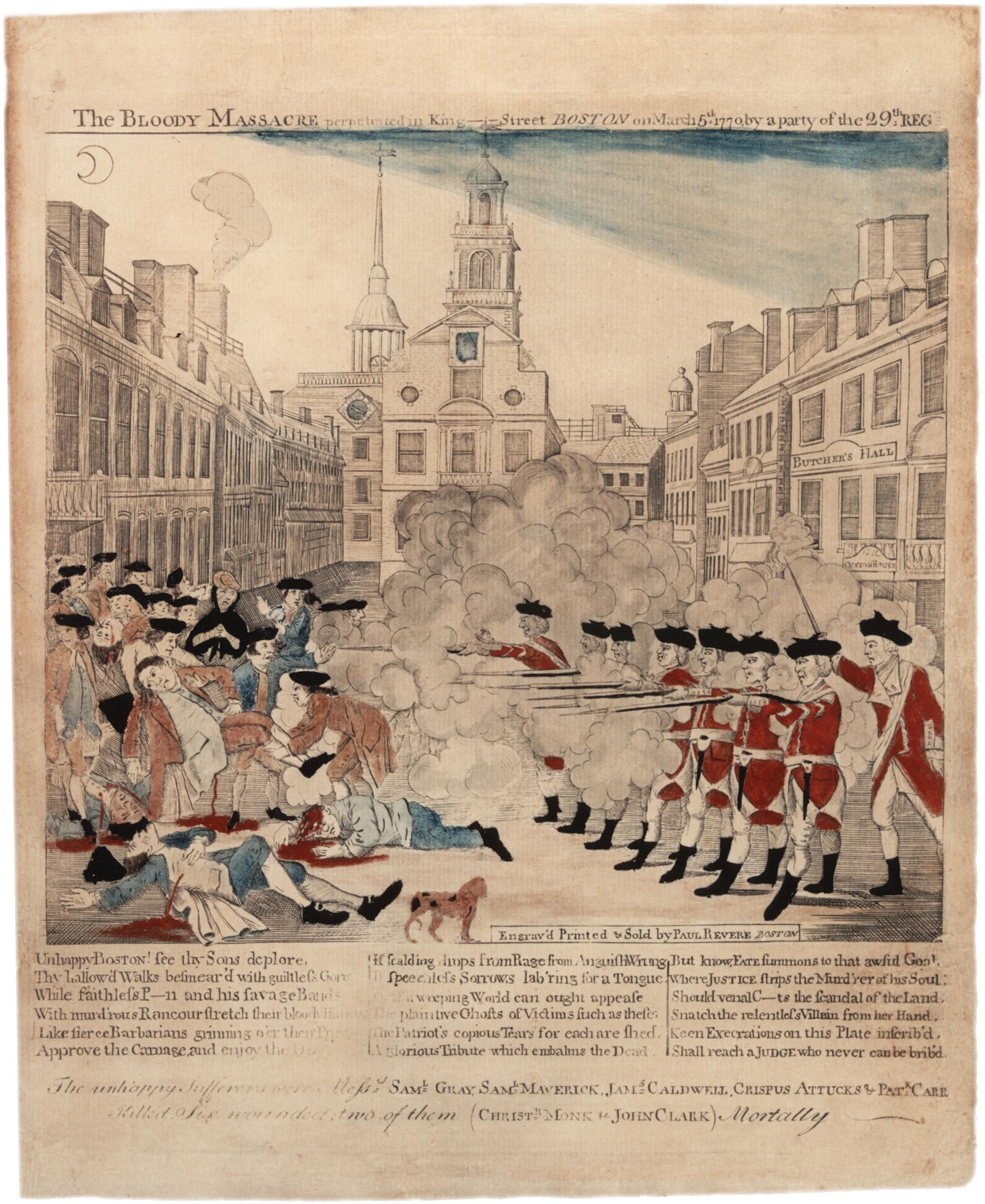Paul Revere’s engraving of the Boston Massacre, 1770
A Spotlight on a Primary Source by Paul Revere
 By the beginning of 1770, there were 4,000 British soldiers in Boston, a city with 15,000 inhabitants, and tensions were running high. On the evening of March 5, crowds of day laborers, apprentices, and merchant sailors began to pelt British soldiers with snowballs and rocks. A shot rang out, and then several soldiers fired their weapons. When it was over, five civilians lay dead or dying, including Crispus Attucks, an African American merchant sailor who had escaped from slavery more than twenty years earlier.
By the beginning of 1770, there were 4,000 British soldiers in Boston, a city with 15,000 inhabitants, and tensions were running high. On the evening of March 5, crowds of day laborers, apprentices, and merchant sailors began to pelt British soldiers with snowballs and rocks. A shot rang out, and then several soldiers fired their weapons. When it was over, five civilians lay dead or dying, including Crispus Attucks, an African American merchant sailor who had escaped from slavery more than twenty years earlier.
Produced just three weeks after the Boston Massacre, Paul Revere’s historic engraving "The Bloody Massacre in King-Street" was probably the most effective piece of war propaganda in American history. Not an accurate depiction of the actual event, it shows an orderly line of British soldiers firing into an American crowd and includes a poem that Revere likely wrote. Revere based his engraving on that of artist Henry Pelham, who created the first illustration of the episode—and who was neither paid nor credited for his work.
Here are a few of the elements Paul Revere used in his engraving to shape public opinion:
- The British are lined up and an officer is giving an order to fire, implying that the British soldiers are the aggressors.
- The colonists are shown reacting to the British when in fact they had attacked the soldiers.
- British faces are sharp and angular in contrast to the Americans’ softer, more innocent features. This makes the British look more menacing.
- The British soldiers look like they are enjoying the violence, particularly the soldier at the far end.
- The colonists, who were mostly laborers, are dressed as gentlemen. Elevating their status could affect the way people perceived them.
- The only two signs in the image that you can read are "Butcher’s Hall" and "Customs House," both hanging directly over the British soldiers.
- There is a distressed woman in the rear of the crowd. This played on eighteenth-century notions of chivalry.
- There appears to be a sniper in the window beneath the "Butcher’s Hall" sign.
- Dogs tend to symbolize loyalty and fidelity. The dog in the print is not bothered by the mayhem behind him and is staring out at the viewer.
- The sky is illustrated in such a way that it seems to cast light on the British "atrocity."
- Crispus Attucks is visible in the lower left-hand corner. In many other existing copies of this print, he is not portrayed as African American.
- The weather conditions depicted do not match the testimony presented at the soldier’s trial (no snow).
- The soldiers’ stance indicates an aggressive, military posture.
Other Interesting Facts
- In the first edition, the time on the clock was incorrect. Revere had it corrected immediately.
- The trial of the British soldiers was the first time a judge used the phrase "reasonable doubt."
- One of the British soldiers named Pierce Butler left the army and became a South Carolina plantation owner. In 1787, he was appointed as a delegate to the Constitutional Convention.
